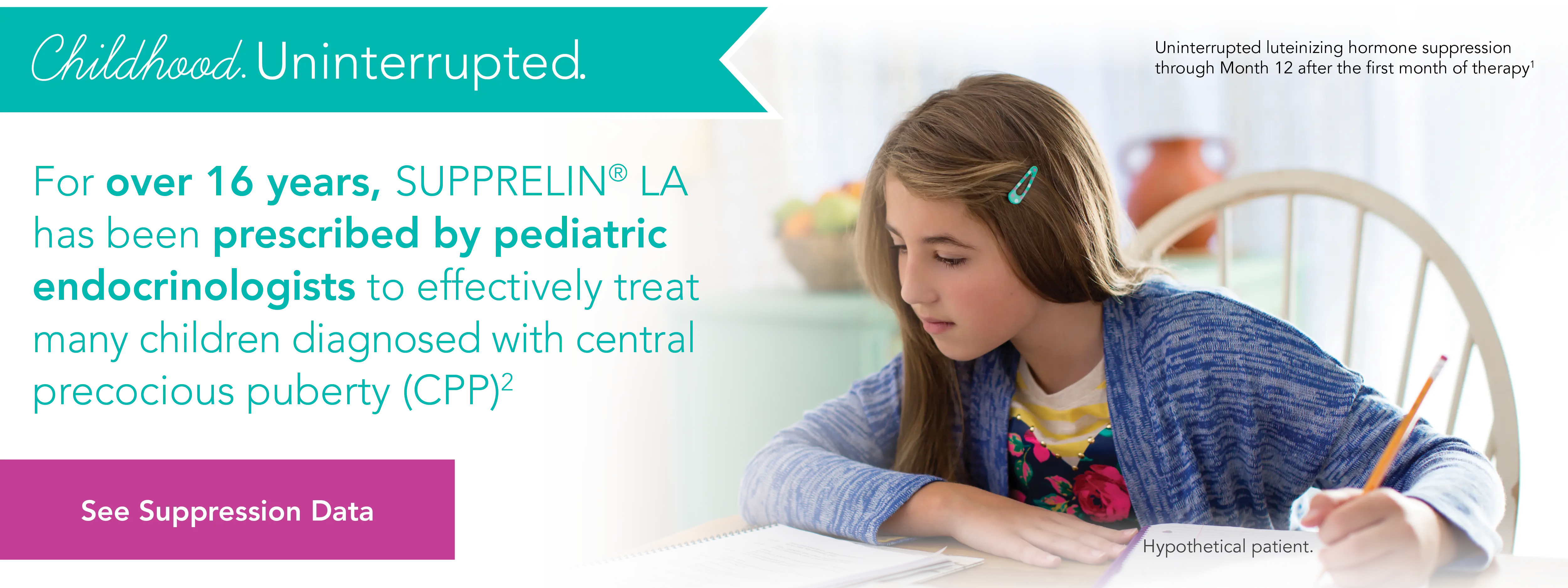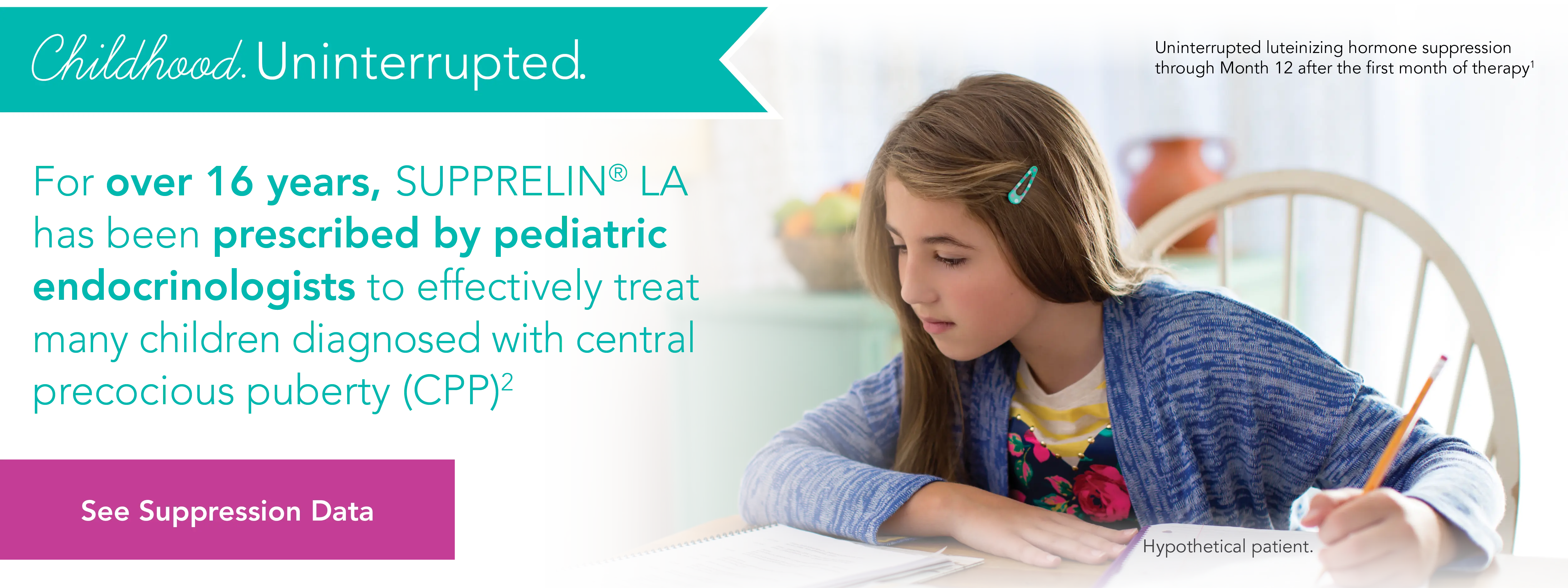Hear from Dr Jennifer Abuzzahab, pediatric endocrinologist, and Dr David Lanning, pediatric surgeon, as they share their decades-long experience with
If you would like to email a link to this page of the website, provide your name and email address, as well as the recipient's email address(es), in the form fields below:
Subject line: Information that may be of interest to you
Endo USA, Inc. is committed to respecting the privacy of its website visitors. No personal information (including email addresses) about you or the recipient will be collected from this email notification feature offered by Endo USA, Inc.
For more information about how Endo USA, Inc. protects personal information about you, please read our Privacy Policy at Endo.com/privacy-legal.
HEALTHCARE PROFESSIONALS
The information contained in this section of the site is intended for U.S. healthcare professionals only. Click continue if you are a healthcare professional.
You are now leaving the SUPPRELIN® LA website.
Endo is not responsible for the content of linked sites.
New! Peer-perspective video on implant removal








